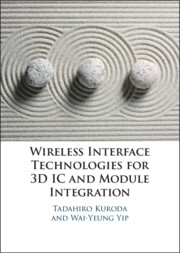3 - Transmission Line Coupler
A Wireless Module Connector
Published online by Cambridge University Press: 17 September 2021
Summary
Chapter 3 provides an in-depth introduction to TLC, starting with an intuitive explanation of its operating principle, followed by a description of its electrical characteristics and coupler and transceiver designs. It then drills down into design variations for four application areas. The first is the implementation of a multidrop bus, where three TLC derivatives for a master–slave, multidrop bus, single-ended-to-differential conversion, and a multimaster, multidrop bus respectively are presented. The second is smartphone application, where two small-footprint TLC derivatives including one for extended communication distance across the thickness of the smartphone are described, together with a high-EMC immunity transceiver for robust operation in the high-EMI environment of a smartphone. The third is adaptation for automotive LAN, where a TLC derivative compatible with the twisted pair wiring used by automotive LANs is introduced, together with a high-EMC immunity transceiver developed to meet the stringent EMI and EMS requirements demanded of automotive electronics. The fourth is the implementation of a completely wireless interface for SSD application. The system architecture is presented, together with a TLC interface nested within a wireless power interface. System-level challenges in startup and error correction and their solutions are also explained.
Keywords
Information
- Type
- Chapter
- Information
- Wireless Interface Technologies for 3D IC and Module Integration , pp. 202 - 290Publisher: Cambridge University PressPrint publication year: 2021
